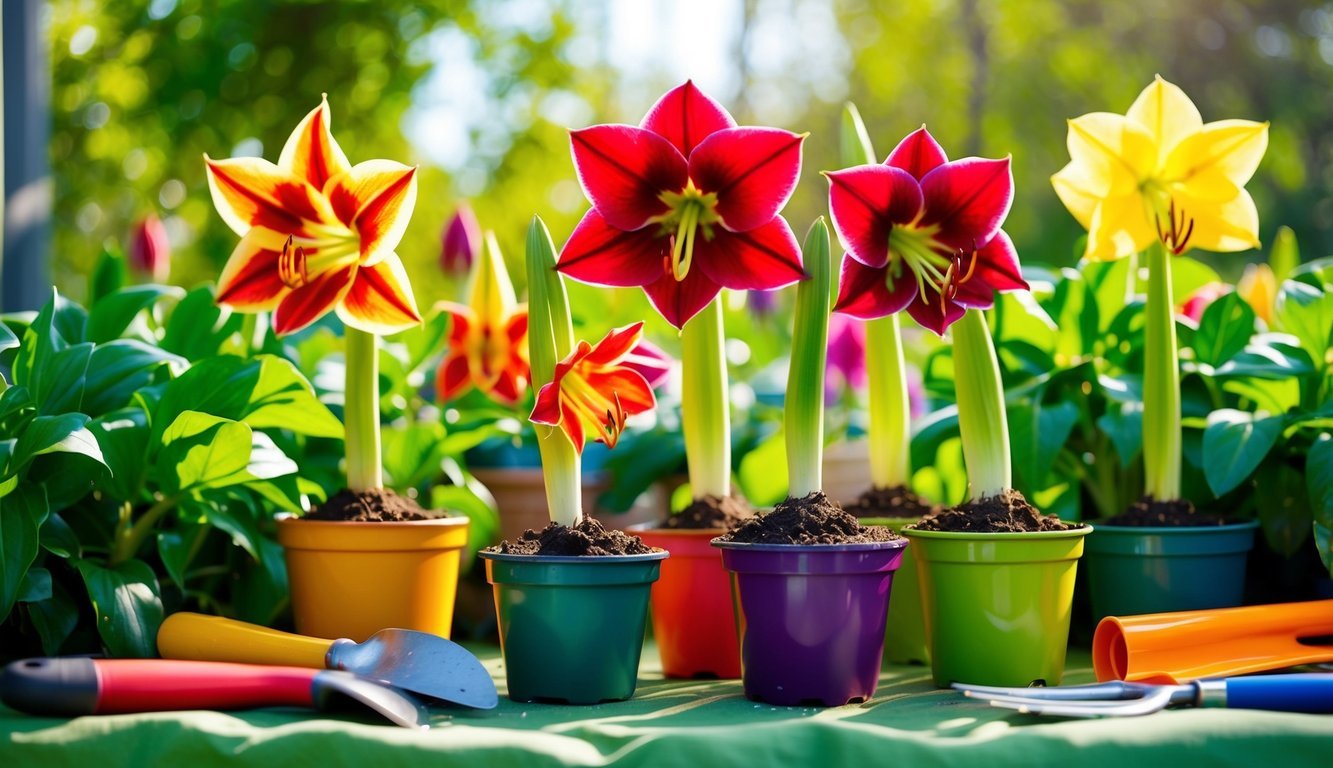
Caring for Your Amaryllis Post-Bloom
Amaryllis plants are notorious for their stunning, oversized blossoms that can infuse any room with beauty.
However, as the last petals fall and the blooms start to fade, you may find yourself pondering your next steps.
Should you repurpose the bulb or conserve it for future seasons? Renowned horticulturist Jerad Bryant shares expert advice on how to nurture your amaryllis once its flowering period concludes.
These impressive bulbs are a memorable addition to traditional holiday decorations, standing proudly alongside poinsettias and Christmas cacti.
The vibrant shades of red, white, and pink contrast magnificently with their lush green leaves, creating a delightful visual display.
Choosing to Compost the Bulb
If you feel that fostering your amaryllis bulb is no longer desirable, composting provides an eco-friendly solution.
This approach is ideal if you have a thriving garden or if you’d simply like to move on.
By adding the bulb to your compost pile, you contribute valuable nutrients back to the earth.
Alternatively, you might consider burying the bulb, allowing it to decompose underground and nourish microorganisms in the soil.
Avoid tossing the bulb into your regular trash, as this contributes to landfill waste.
If you’ve purchased a bulb encased in wax—often done to prolong its shelf life—be sure to remove the wax before composting, as it won’t break down naturally.
Regular Maintenance Essentials
Similar to daffodils and tulips, the leaves of your amaryllis will persist long after its flowers are gone.
These green leaves are crucial for photosynthesis, converting sunlight into much-needed energy for the bulb.
Trimming the leaves too early could compromise the bulb’s ability to produce flowers in the following season.
Ongoing care is key.
Make sure your plant enjoys bright, indirect sunlight, sufficient moisture, and a warm environment.
Amaryllis thrive in moist but well-drained soil, so be cautious not to overwater if the soil feels damp.
For bulbs situated in water, swap out the water weekly to prevent rot.
Preparing for Dormancy
Like other spring- and winter-blooming bulbs, amaryllis require a cooling-off period to prepare for their next flowering cycle.
These bulbs are sensitive to cold, in contrast to hardier options like tulips and daffodils.
Hailing from warm, tropical regions of Central and South America, amaryllis thrive in milder conditions during dormancy.
While some regions in North America can support outdoor growing, most gardeners should opt to keep their bulbs indoors.
To care for bulbs indoors or outdoors, remove them from pots to avoid rot.
Shake off excess soil and allow them to air-dry in a cool, dark place.
They need about eight to ten weeks of dormancy to get ready for their next planting cycle.
Indoor Bulb Storage
For those located in zones 1 through 7, storing amaryllis bulbs indoors during winter is an excellent option.
Keep the bulbs in a cool, dark environment that mimics soil conditions; good options include a refrigerator, an unheated garage, or a cool pantry.
During dormancy, maintaining a consistent temperature with minimal light is crucial to prevent premature sprouting.
Once the dormancy period ends, you can prepare the bulbs for repotting.
They can go into soil-filled pots or sit in jars of water, depending on what suits your indoor decor.
If you use water, adding pebbles at the bottom of the jars will provide stability.
After about five weeks of care, your amaryllis should be ready to bloom again.
To have flowers in time for the holidays, plant the bulbs six weeks before Christmas, ensuring their dormancy wraps up by late August or early September.
Once blooming is over, remove the spent flowers and continue the care cycle.
With the right attention, amaryllis can become a long-lasting highlight of your indoor garden, gracing you with remarkable blooms year after year.
Source: Epicgardening

